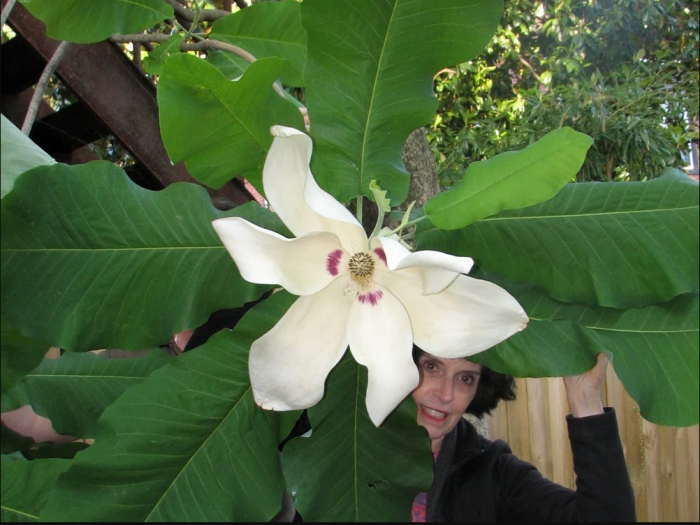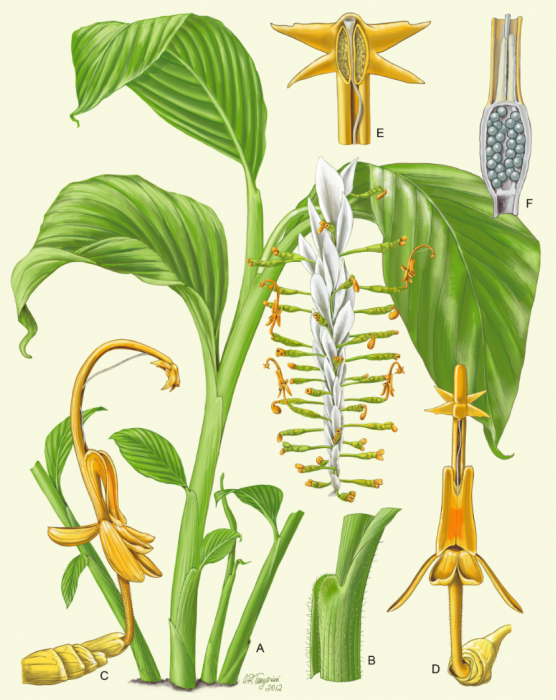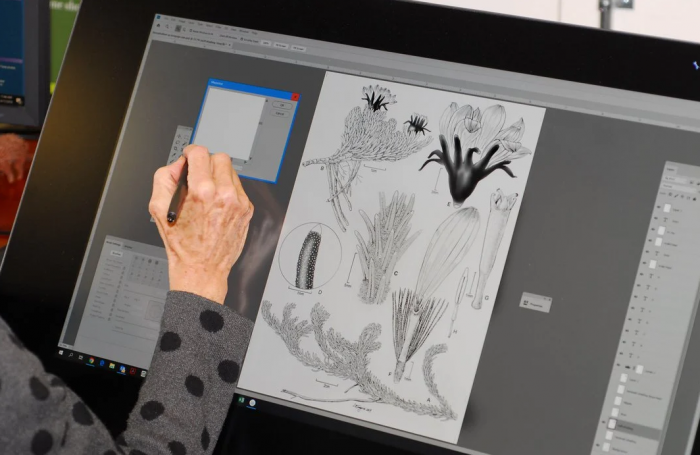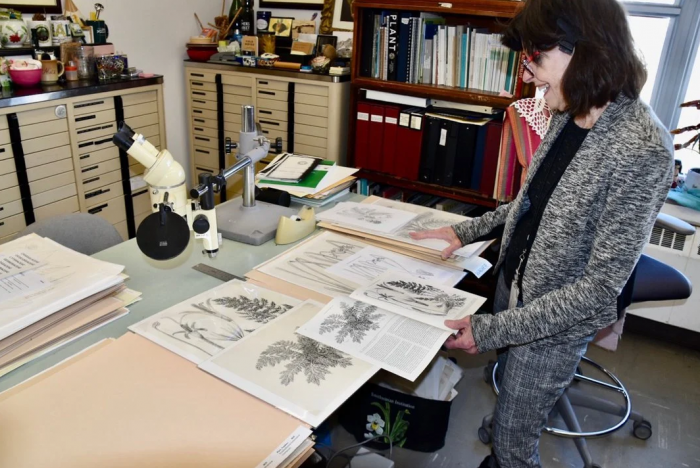The Smithsonian’s Only Botanical Illustrator Transforms Science Into Stunning Works of Art
Learn how botanical illustrator Alice Tangerini keeps traditional artistic methods alive in the increasingly digital world of science.

Stepping into Alice Tangerini’s office is like stepping into a garden. Delicate seedlings line the bright windowsill, soaking in the morning sunlight. Dried plant specimens peek their crinkly limbs out from under their protective coverings. But most captivating is the array of vibrant botanical illustrations that cover the walls and seem to spring to life from their frames, highlighting an important intersection between art and science. Alice Tangerini, the National Museum of Natural History’s first and only botanical illustrator, has spent the last 50 years bringing over 1000 plant species to life with her drawings. Her illustrations have guided botanists searching for specimens in the field, appeared in museum exhibits around the world and helped researchers name and describe hundreds of new species. She has also inspired a whole new generation of artists to preserve what is rapidly becoming an endangered field.

Since the age of 4, Tangerini has rarely been spotted without a pencil in her hand. She began drawing horses, dogs, and dinosaurs out of kindergarten picture books, and was always more interested in meticulous sketching than fingerpainting with her classmates.
One summer, while working towards her degree in fine arts from Virginia Commonwealth University, Tangerini heard that a botanist, Lyman Smith, was looking for a summer artist to join him at the Smithsonian’s National Herbarium. She applied, and soon Smith sat her down in front of a dead plant, paper, a pencil, a pen and a jar of ink. He told her that he would be back at the end of the day to see what she had done.
Having never drawn a realistic plant in her life, Tangerini was at a loss for what to do. “Talk about learning from scratch,” she says, laughing at the memory. “I drew it exactly the way it looked, like a dead plant with tape and string holding the bent leaves together.” Tangerini would later learn to reanimate her specimens and draw them as they would have looked in the natural world. But Smith saw her potential and decided to give her a shot.
Without a formal biological background, Tangerini learned botanical terminology and plant morphology step-by-step. Surrounded by the museum’s sprawling collection of 5 million plant specimens, she began with the basics. In the beginning, Tangerini had to ask researchers to point out where the male and female parts of a plant were located and would then spend hours poring over every inch of her dried specimens under a microscope to memorize their complexities. It was not long before she was identifying details that even eagle-eyed botanists had missed, leading them to change many of their official descriptions based on her illustrations.

One of the highlights of Tangerini’s career came when she was asked to illustrate a new species of bromeliad — the family of tropical, flowering plants that includes Spanish moss and pineapples — that had already been described by her mentor, Lyman Smith. After noticing inconsistencies between what she was seeing and what Smith had written, she decided to do some digging. Tangerini went down to the herbarium to find similar specimens that she could compare to the bromeliad in question. “I became something of a botanical detective, and after I found that certain features were very different, they had to change the name they were going to give it,” says Tangerini. “So, they named it after me.” The plant was christened Navia aliciae, in recognition of Tangerini’s contribution to the scientific understanding of the species.
A main goal in botanical illustration is to create a record for scientists to refer back to in the future. In addition to working as the Smithsonian’s only botanical illustrator, Tangerini also manages the museum’s extensive collection of botanical art. Many of these pieces were created in the 1800s, and modern botanists still look at them to learn about species that have since gone extinct or significantly changed over time.
“What I’m doing now will last through the centuries,” says Tangerini. “Every time I’m drawing a line, I try to make it the best line I’ve ever drawn.” The specimens that Tangerini illustrates are often the only representatives of their species that have ever been found in the wild, making it essential for her to document the plants’ intricacies and details in case they are never discovered again.This long-lasting botanical record drives Tangerini’s passion for her field and her determination to preserve the traditional artistic techniques that she has used since the beginning of her career. In an increasingly digital world, Tangerini has begun to combine technology with the time-honored “pen and ink” methods of the past, and the resulting illustrations blend multi-dimensional computer programs with the extreme precision that only hand-drawing can provide.

While it may seem like technology would have already surpassed manual artistic processes, Tangerini has actually been waiting years for digital media to catch up to the abilities of her physical pencils, pens and brushes. As she often updates her illustrations over the decades, Tangerini needs to be sure that switching media will not affect the clarity of her work. “You can go digital, but it must look like pen and ink,” says Tangerini. “Entire species will be compared on the basis of these illustrations and how different these plants look, so the techniques need to be consistent.”
Each of Tangerini’s illustrations can take up to two weeks to complete, and her artistic process always begins the same way: with a classic pencil drawing. Stacked next to her drafting table are an impressive array of drawing utensils that Tangerini uses to compose the tiny hairs that erupt from floral stems and the sweeping lines that animate tall grasses. Tangerini’s first portrayal may go through over a dozen versions, as botanists tell her exactly what to focus on, before she traces over the drawing with a pen and ink.
Finally, the technology comes into play as the intimidatingly large microscope in the corner of Tangerini’s office is used to project an enlarged image of her dried specimens onto a digital drawing monitor. Suddenly, the magic happens as Tangerini begins trace over the photographs with a pressure-sensitive stylus, layering her precise hand drawings underneath the computerized graphics. She builds upon the illustration until it is difficult to tell which is her drawing and which is the plant sample it was based on.
“What I’m doing will last through the centuries.”
Alice Tangerini, Botanical Illustrator
While it may seem like technology would have already surpassed manual artistic processes, Tangerini has actually been waiting years for digital media to catch up to the abilities of her physical pencils, pens and brushes. As she often updates her illustrations over the decades, Tangerini needs to be sure that switching media will not affect the clarity of her work. “You can go digital, but it must look like pen and ink,” says Tangerini. “Entire species will be compared on the basis of these illustrations and how different these plants look, so the techniques need to be consistent.”
Each of Tangerini’s illustrations can take up to two weeks to complete, and her artistic process always begins the same way: with a classic pencil drawing. Stacked next to her drafting table are an impressive array of drawing utensils that Tangerini uses to compose the tiny hairs that erupt from floral stems and the sweeping lines that animate tall grasses. Tangerini’s first portrayal may go through over a dozen versions, as botanists tell her exactly what to focus on, before she traces over the drawing with a pen and ink.
Finally, the technology comes into play as the intimidatingly large microscope in the corner of Tangerini’s office is used to project an enlarged image of her dried specimens onto a digital drawing monitor. Suddenly, the magic happens as Tangerini begins trace over the photographs with a pressure-sensitive stylus, layering her precise hand drawings underneath the computerized graphics. She builds upon the illustration until it is difficult to tell which is her drawing and which is the plant sample it was based on.

For Tangerini, outreach and education are essential to ensuring that the field of botanical illustration will flourish in the future. She teaches short classes at fine arts schools, gives lectures to Smithsonian interns about the importance of botanical illustration, and enters her work in botanical art collections all over the world. Taking new students as often as possible, Tangerini makes sure to teach them how to illustrate without technology using only a pen and ink. “I want them to capture the personality and the feel of every organism as they draw by hand,” she says. “That’s the only way they will learn to love botanical illustration as much as I do, which is quite a lot.”

Emma Saaty is an intern in the Smithsonian’s National Museum of Natural History’s Office of Communications and Public Affairs. She is a graduating senior at George Washington University currently completing a BS in Biological Anthropology with minors in Journalism and Biology. Emma has previously written for Planet Forward and conducts research on Virunga mountain gorillas with GW’s Life History and Skeletal Biology laboratory. You can find her here.
This post was originally published by the Smithsonian magazine blog, Smithsonian Voices. Copyright 2023 Smithsonian Institution. Reprinted with permission from Smithsonian Enterprises. All rights reserved. Reproduction in any medium is strictly prohibited without permission from Smithsonian Institution.
Posted: 27 April 2023







